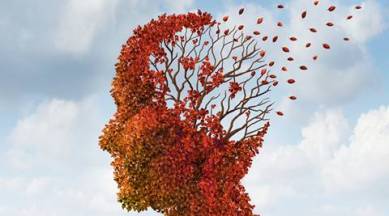📣 For more lifestyle news, click here to join our WhatsApp Channel and also follow us on Instagram
Painting strokes may help predict Alzheimer’s risk: Study
Analysing a person's painting strokes may help detect the risk of neurodegenerative disorders such as Alzheimer's and Parkinson's disease, a new study suggests.

Analysing a person’s painting strokes may help detect the risk of neurodegenerative disorders such as Alzheimer’s and Parkinson’s disease, a new study suggests. Researchers from University of Liverpool in the UK examined 2,092 paintings from the careers of seven famous artists who experienced both normal ageing and neurodegenerative disorders.
WATCH WHAT ELSE IS IN THE NEWS
monthly limit of free stories.
with an Express account.
Of the seven, two had suffered from Parkinson’s disease (Salvador Dali and Norval Morrisseau), two had suffered from Alzheimer’s disease (James Brooks and Willem De Kooning) and three had no recorded neurodegenerative disorders (Marc Chagall, Pablo Picasso and Claude Monet). The brushstrokes of each of the paintings were analysed using a method of applying non-traditional mathematics to patterns known as ‘Fractal’ analyses to identify complex geometric patterns.
Fractals are mathematical characterisations of self-repeating patterns often described as the ‘fingerprints of nature’. They can be found in natural phenomena such as clouds, snowflakes, trees, rivers and mountains. This method has also been used to determine the authenticity of major works of art.
Although painters work within a different style or genre, the fractal dimension in which they operate should remain comparable. The results were examined to see if the variations in an artist’s unique ‘fractals’ in their work over their career were due to them just increasing in age or because of ongoing cognitive deterioration.
The study showed clear patterns of change in the fractal dimension of the paintings differentiated artists who suffered neurological deterioration from those ageing normally. “Art has long been embraced by psychologists an effective method of improving the quality of life for those persons living with cognitive disorders,” said Dr Alex Forsythe from the university’s School of Psychology.
“We have built on this tradition by unpicking artists ‘handwriting’ through the analysis of their individual connection with the brush and paint. This process offers the potential for the detection of emerging neurological problems,” said Forsythe.
“We hope that our innovation may open up new research directions that will help to diagnose neurological disease in the early stages,” Forsythe added. The study was published in the journal Neuropsychology.
📣 For more lifestyle news, click here to join our WhatsApp Channel and also follow us on Instagram